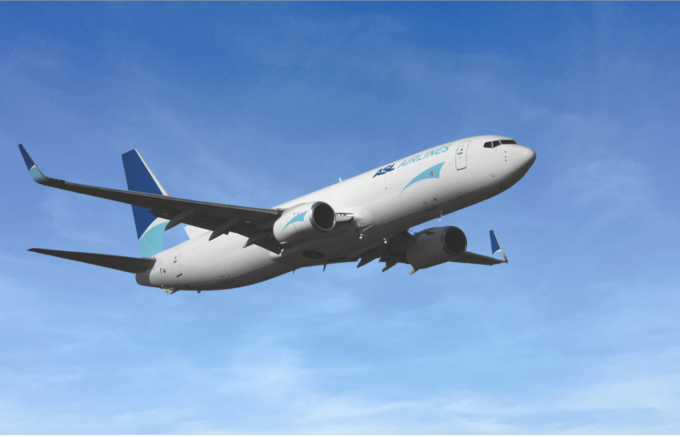Airfreight demand grows but 777F production logjam hobbles capacity
Boeing’s inability to deliver new 777-200 freighters is crimping carrier capacity to meet the strong ...

Aviation in the US has been hobbled by chronic supply chain problems, and Boeing’s struggles with safety are not making things easier.
The aircraft maker’s plans to ramp up production of its B737 MAX remain on ice while management has been tasked by the Federal Aviation Administration (FAA) to formulate a plan to fix its quality control issues within 90 days.
On Monday, the FAA released a scathing report by a panel of experts on Boeing’s safety culture .
The 50-page report, which took a year to compile, had been mandated by Congress in 2020 in the wake of the fatal crashes of two 737 MAX planes in 2018 and 2019 that claimed the lives of everyone on board.
FAA experts concluded that Boeing had ineffective procedures in place and that communication between senior management and other members of staff had broken down, preventing bad news to travel from factory floor to C-suite. In addition, frequent changes to complex procedures and training left employees confused. Employees did not trust the ‘Speak up’ programme the company had introduced after the MAX was grounded, the report found.
The materials provided by Boeing “did not provide objective evidence of a foundational commitment to safety that matched Boeing’s descriptions,” its authors concluded. They identified 27 findings and 53 associated recommendations.
Boeing pledged to “carefully review the panel’s assessment and learn from their findings”.
The report was released two days before Boeing CEO Dave Calhoun was due for a meeting with FAA administrator Mike Whitaker to discuss the plane maker’s quality control system, compliance with manufacturing requirements and expansion of its safety management system.
The FAA has placed inspectors in Boeing facilities to oversee 737 production and audit production lines in response to the incident on 5 January, when an Alaska Air 737-9 lost a panel in flight shortly after take-off. The incident has come to be seen as the latest in a string of quality lapses at Boeing and key supplier Spirit AeroSystems.
At the meeting, on Wednesday, Mr Calhoun was given a 90-day ultimatum to devise a plan to fix Boeing’s “systemic” quality control issues.
The plan must incorporate the findings of the FAA panel as well as the authority’s upcoming report of its audit of Boeing’s production line. In addition, the company is tasked to mature its Safety Management System, to which it committed in 2019, and integrate this with a quality management system that applies the same level of oversight to suppliers.
“Boeing must take a fresh look at every aspect of its quality control process and ensure that safety is the company’s guiding principle,” Mr Whitaker commented.
For the time being, Boeing’s plans to ramp up 737 output to catch up with demand have been put on ice by the FAA. The situation is ominous for the manufacturer as American Airlines is preparing to place orders for about 100 narrowbody aircraft amid reports that the carrier is leaning towards awarding a larger portion of the order to Airbus.
Both large aircraft OEMs’ narrowbody jet production schedules are sold out until the end of the decade, and a slowdown of Boeing’s production is bound to stretch lead times further. One carrier executive reckons next year’s deliveries will be nine months late.
Already deliveries are affected by problems in the aerospace supply chains. Many parts are in short supply. Lead times for some metals and windshields are two-to-five-times longer than normal.
“Specialty hardware and fasteners is probably one of the most challenging areas, requiring us to move to suitable substitutes,” reported Brian McCarthy, VP marketing and sales at Mammoth Freighters.
The company’s acquisition of multiple planes and kits, as well as the decision to source most of its parts from North American suppliers, appears to have helped it avoid serious shortages, he added.
In tandem with lead times, prices have gone up. In some cases by 20-30%.
Sheer availability of parts and lead times for delivery apart, supply chains are also strained by shortages of aircraft mechanics and other aviation labour. Some machine shops have excellent equipment but are short of labour to operate it, Mr McCarthy observed.
“At a machine shop level, those people are even tougher to find [than aerospace labour in general],” he said. “Licensed aircraft mechanics are like unicorns.”
The combination of a scramble for aircraft to meet rampant travel demand, parts shortages and not enough skilled labour would be a serious headache for freighter conversion specialists, but their situation is “mitigated” by another issue: demand for conversions has collapsed.
Bob Convey, SVP of sales and marketing at Aeronautical Engineers, noted that close to 100 narrowbody cargo planes were currently parked, and 40-45 of these had never seen service.
“I’ve never seen an oversupply that big,” he said. AEI has been working in slow gear, and Mr Convey does not expect the market to rebound until the latter part of 2025.
By then the parts shortage may be less of a headache. By some estimates, the delays and shortages could take up to two years to resolve.
Meanwhile, Boeing faces further safety headaches: the US Department of Justice (DOJ) is reportedly scrutinising the Alaska Air incident with the possibility of a criminal investigation.
Under the government’s deferred-prosecution agreement of 2021 over the fatal 737 MAX crashes in 2018 and 2019, Boeing agreed to a compliance programme designed to prevent it from deceiving regulators under which it would co-operate with the authorities for three years. The Alaska Air incident occurred two days before the expiry of that agreement, which might open the door to criminal proceedings if the DoJ were to conclude that the issue constituted a breach of that agreement.
Comment on this article